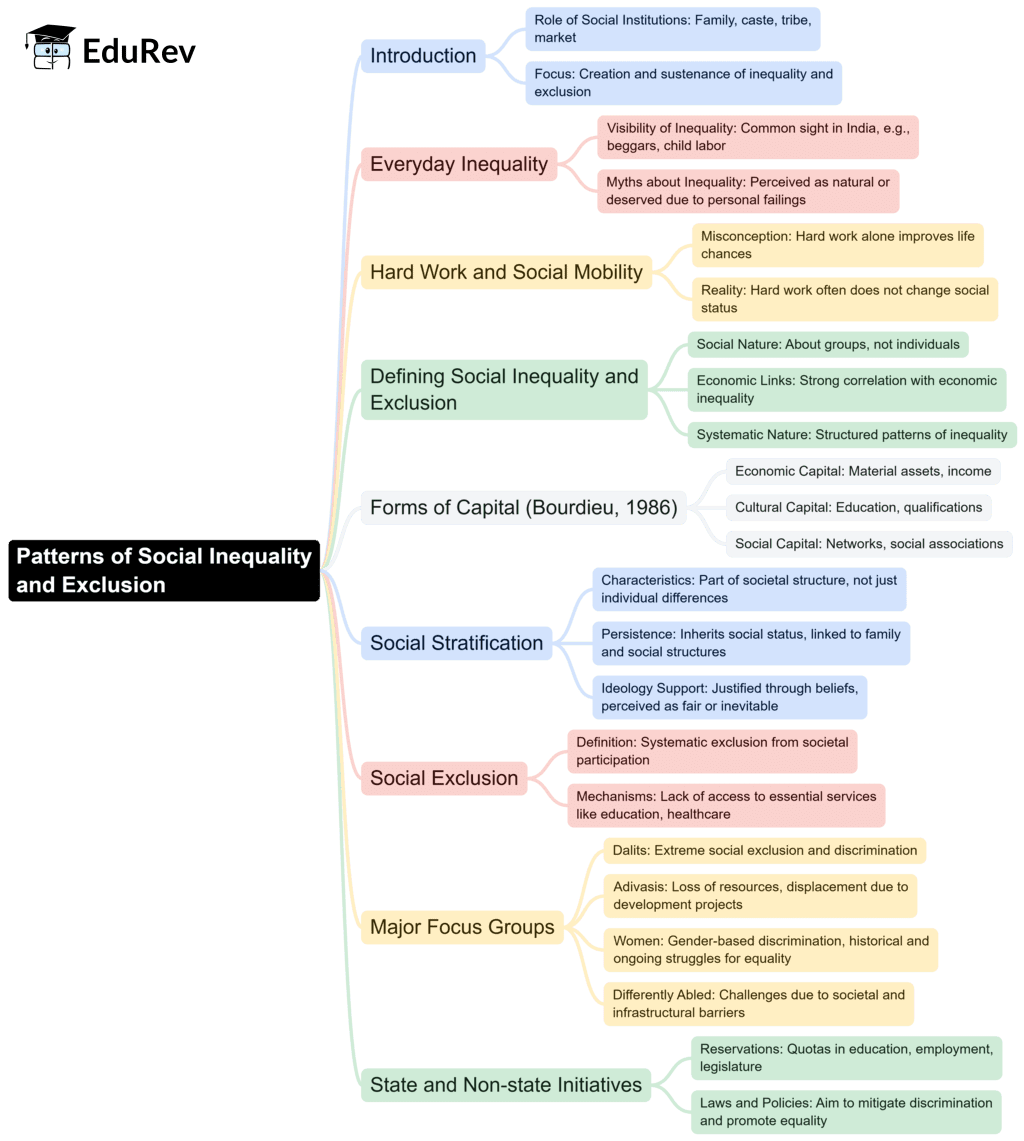Humanities/Arts Exam > Humanities/Arts Notes > Sociology Class 12 > Mind Map: Patterns of Social Inequality and Exclusion
Mind Map: Patterns of Social Inequality and Exclusion | Sociology Class 12 - Humanities/Arts PDF Download

The document Mind Map: Patterns of Social Inequality and Exclusion | Sociology Class 12 - Humanities/Arts is a part of the Humanities/Arts Course Sociology Class 12.
All you need of Humanities/Arts at this link: Humanities/Arts
|
62 videos|157 docs|25 tests
|
FAQs on Mind Map: Patterns of Social Inequality and Exclusion - Sociology Class 12 - Humanities/Arts
| 1. What are the main causes of social inequality and exclusion? |  |
Ans. The main causes of social inequality and exclusion include economic disparities, lack of access to education, systemic discrimination based on race, gender, or ethnicity, and social stratification. These factors create barriers that prevent certain groups from achieving equal opportunities and accessing resources.
| 2. How does social inequality affect marginalized communities? |  |
Ans. Social inequality negatively impacts marginalized communities by limiting their access to essential services such as healthcare, education, and employment. This can lead to poorer health outcomes, lower educational attainment, and reduced economic mobility, perpetuating a cycle of poverty and exclusion.
| 3. What role does education play in addressing social inequality? |  |
Ans. Education plays a crucial role in addressing social inequality by providing individuals with the knowledge and skills needed to improve their socio-economic status. Access to quality education can empower marginalized groups, promote social mobility, and reduce disparities, fostering a more equitable society.
| 4. What are some examples of social exclusion in different cultures? |  |
Ans. Examples of social exclusion can vary across cultures, such as caste discrimination in India, racial segregation in the United States, or gender-based exclusion in various societies. These forms of exclusion manifest through unequal treatment, limited access to resources, and social stigmatization.
| 5. How can societies work towards reducing social inequality? |  |
Ans. Societies can work towards reducing social inequality by implementing policies that promote equitable access to education, healthcare, and job opportunities. Additionally, fostering inclusive practices, raising awareness about discrimination, and supporting community initiatives can help bridge the gaps and enhance social cohesion.
Related Searches





















